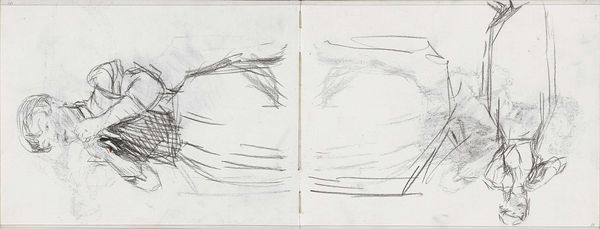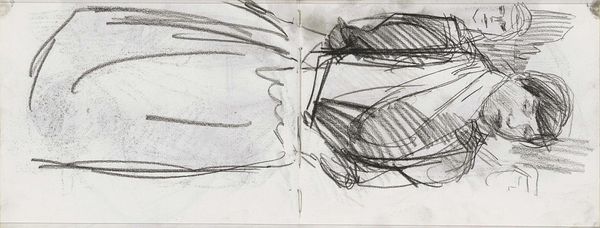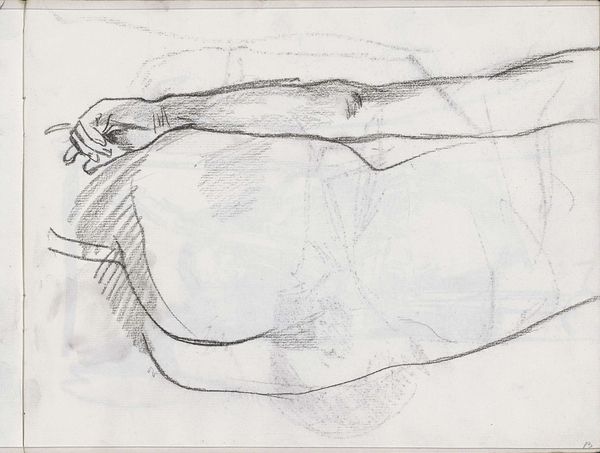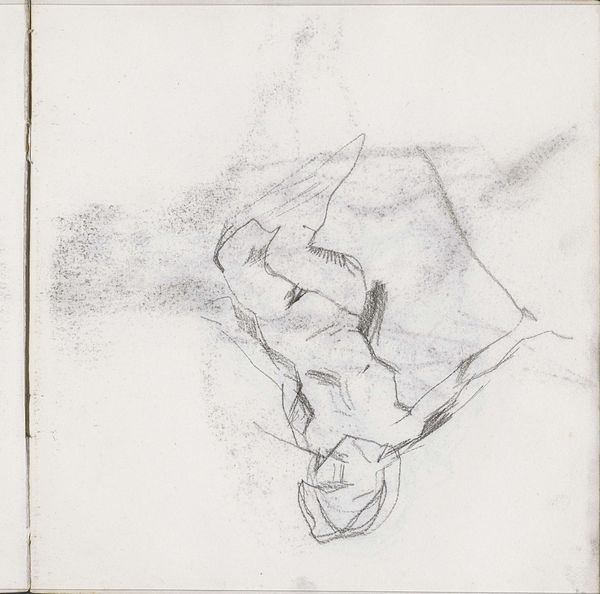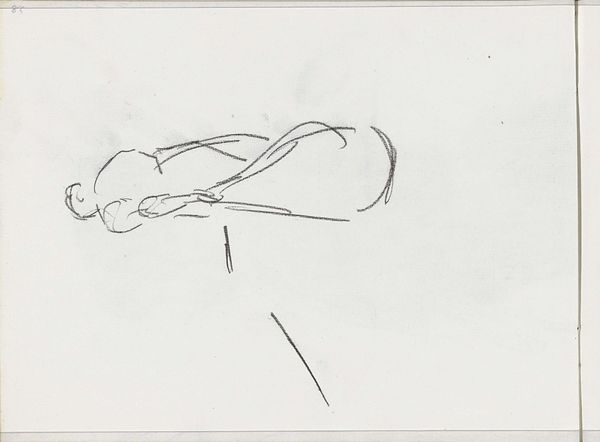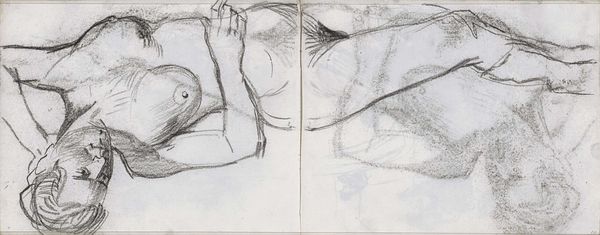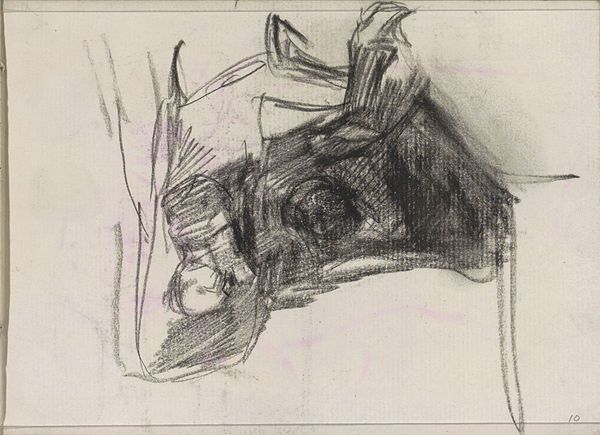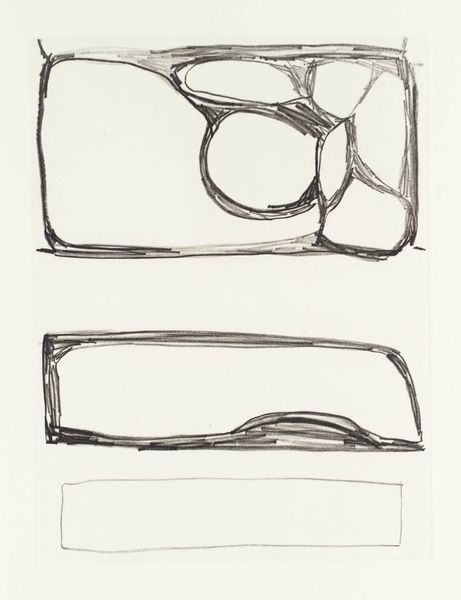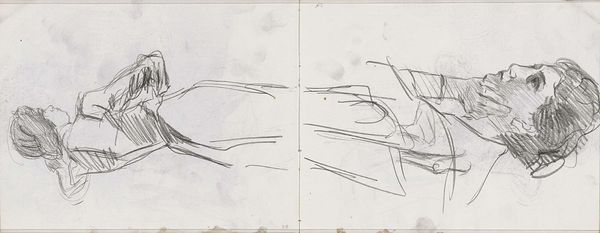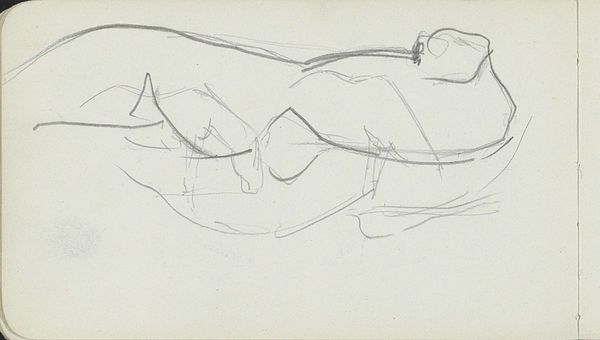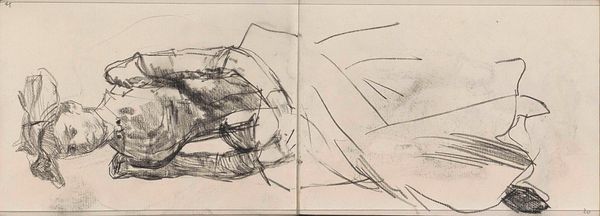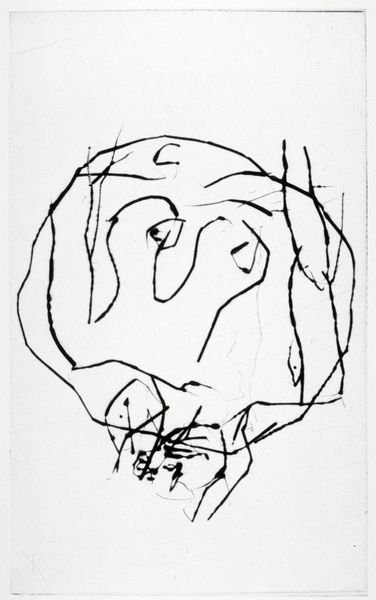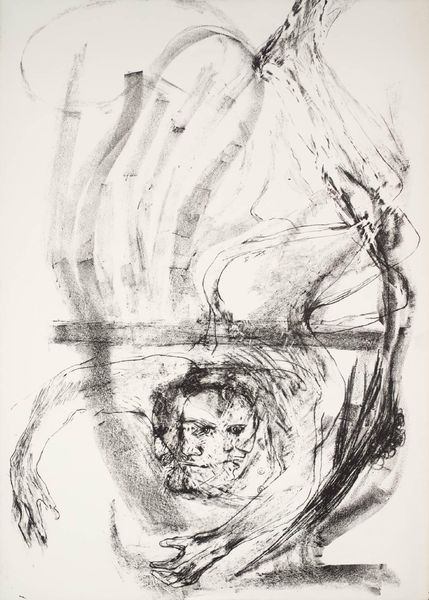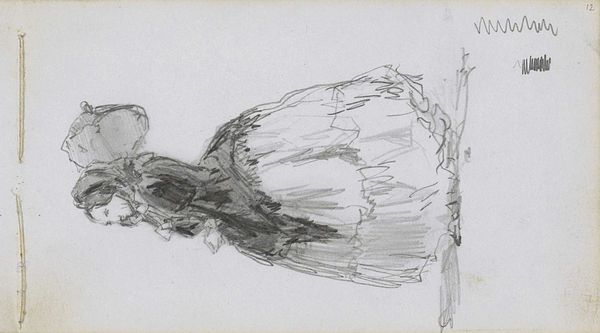
Copyright: Rijks Museum: Open Domain
Curator: Isaac Israels’ "Liggende Vrouw," housed here at the Rijksmuseum, dates sometime between 1875 and 1934. What strikes you about this sketch? Editor: The immediate impression is one of vulnerability, almost voyeuristic. It's a fleeting capture, an intimate moment made public, which raises interesting questions about the female gaze. Curator: Precisely! Note the stark contrast of the defined facial features and upper body and the almost complete disintegration of form as the eye moves further down the body. How do you read that? Editor: I see it as commentary on the male gaze inherent to classical artistic training and art-making. It prioritizes the face – often linked to identity and consciousness – over the body, reinforcing an unequal relationship. The sketchiness denies solidity. Curator: Indeed, it's as if the physical form is deliberately rendered secondary to the perceived essence of the subject. Israels utilizes a fragmented composition to draw the viewer's attention to certain planes. Semiotically, one might say he directs us towards those traits culturally designated as feminine. The soft flowing lines, for example. Editor: And we can also consider how the lack of background situates her in this in-between space – between public and private, present and absent. Is she even aware of being watched, or is this a subconscious manifestation of internalized societal pressure? What is she thinking? Curator: An important question that the artist has perhaps intentionally left open for debate, and yet consider the formal choices made. Israels teases us with a completed idea. Why not finish the job? Is it a case of lacking skills or making an intentional gesture? The texture of the quick sketch-like quality creates a lively rhythm for the eye. Editor: Maybe it’s an unfinished statement – not quite rebellion but also not complicit acceptance. The sketch can reflect many women’s struggle with their identity that society puts upon them and also the desire for self-determination, leaving me with complex feeling to grapple with and feeling sympathetic to her experience. Curator: A lovely way to close us out. In scrutinizing both intention and presentation, Israels pushes the limits of subject and artist. Editor: Right, thank you. His initial drawing evokes dialogue far beyond what is visually represented, opening many lines of inquiry and social commentary.
Comments
No comments
Be the first to comment and join the conversation on the ultimate creative platform.
